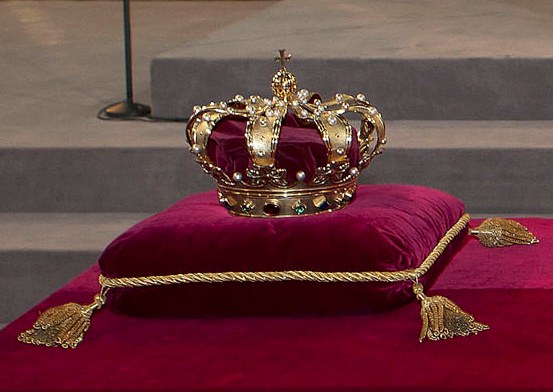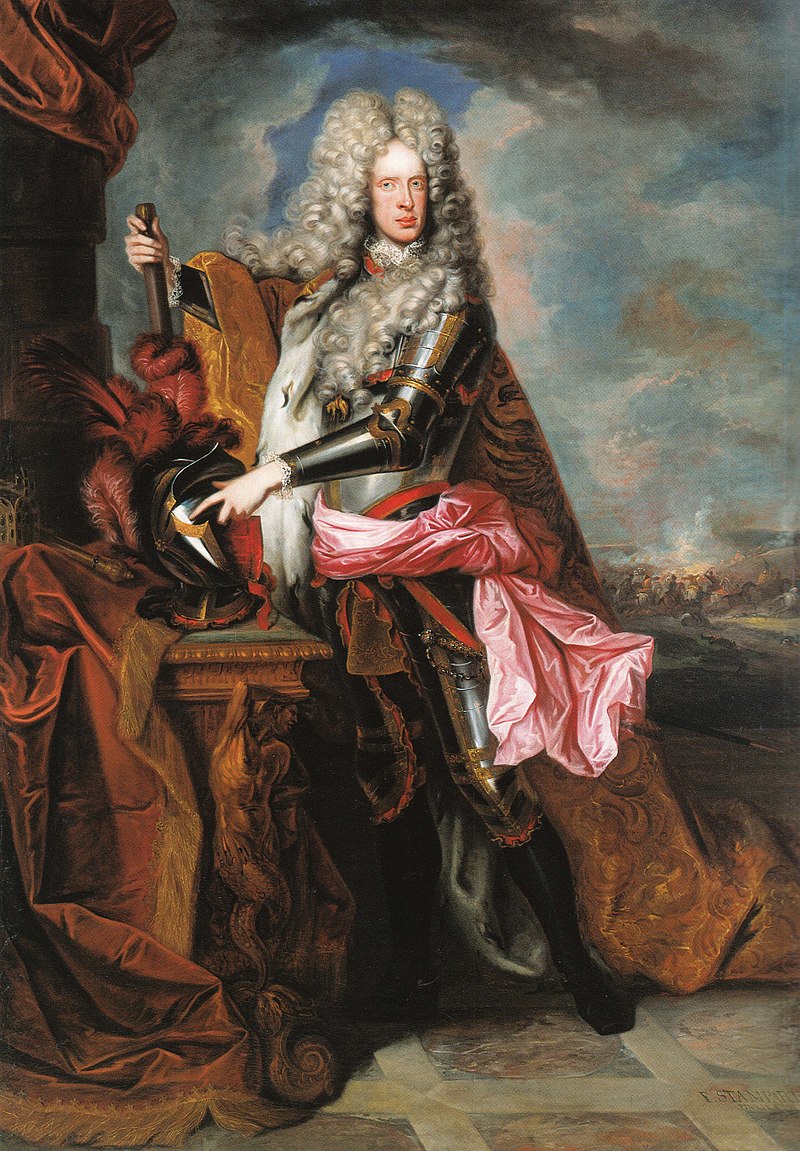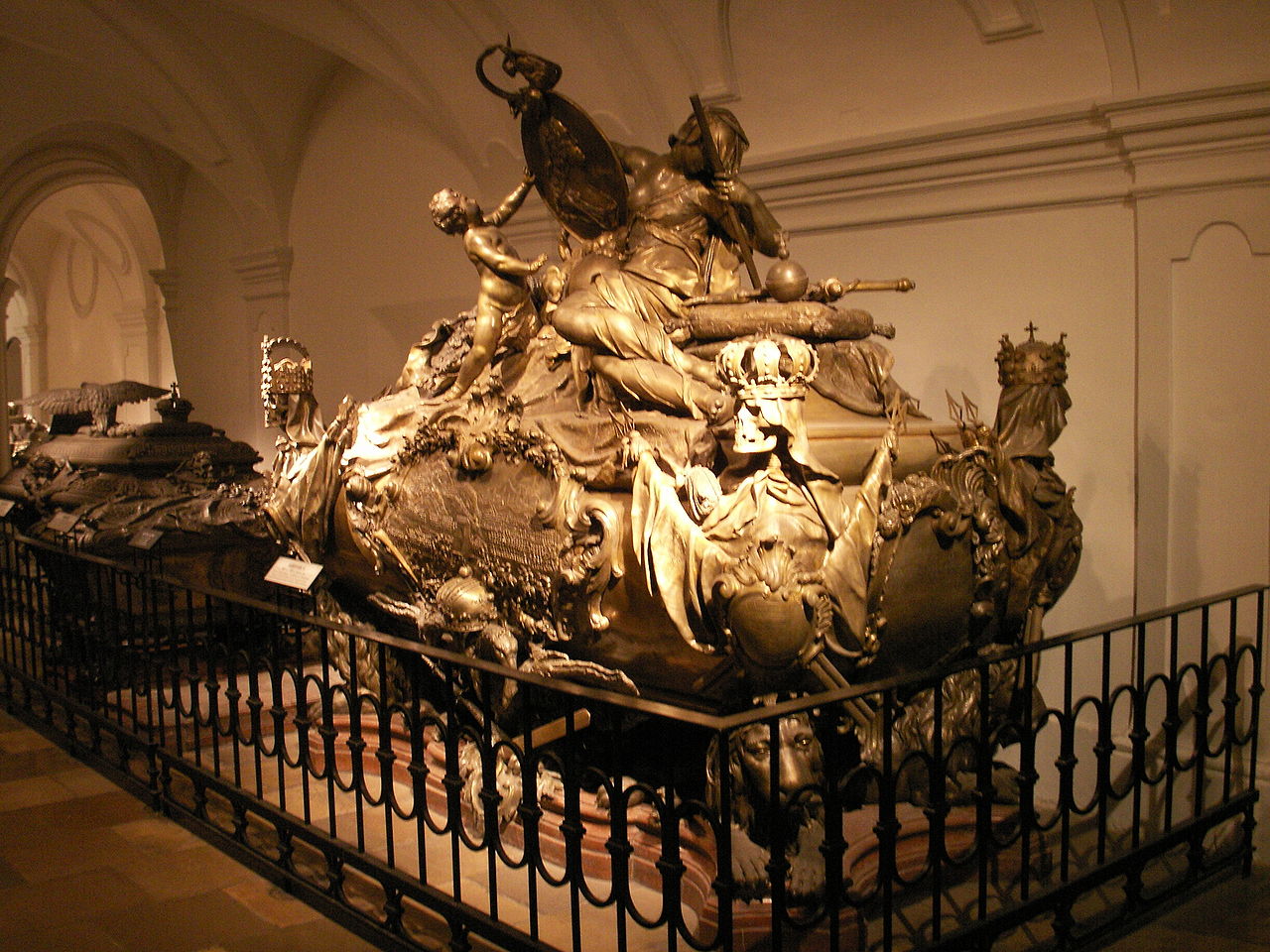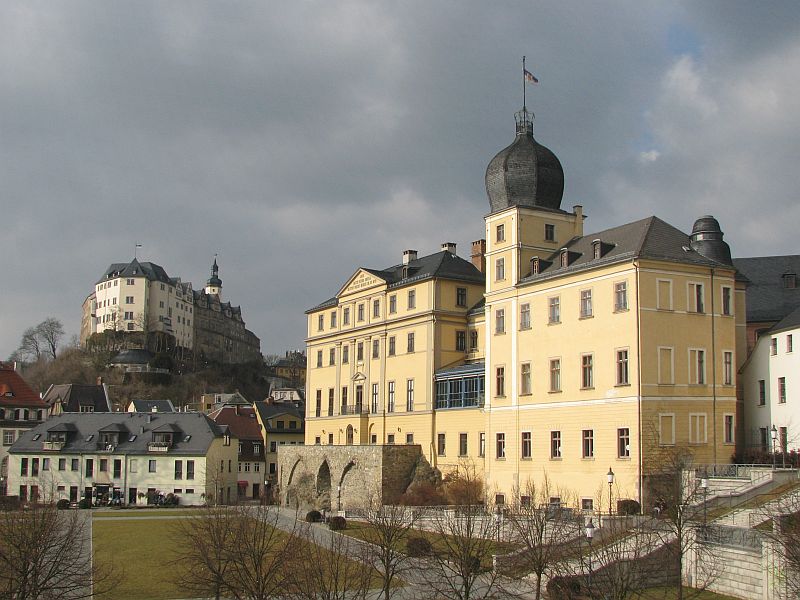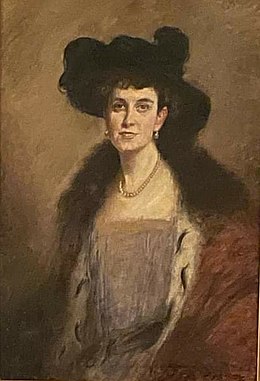by Susan Flantzer
© Unofficial Royalty 2023

Ida of Waldeck and Pyrmont, Princess of Schaumburg-Lippe; Credit – Wikipedia
Principality of Schaumburg-Lippe: In 1647, the County of Schaumburg-Lippe was formed through the division of the County of Schaumburg by treaties between the Duke of Brunswick-Lüneburg, the Landgrave of Hesse-Kassel, and the Count of Lippe. In 1808, the County of Schaumburg-Lippe was raised to a Principality and Georg Wilhelm, Count of Schaumburg became the first Prince of Schaumburg-Lippe.
At the end of World War I, Adolf II, the last Prince of Schaumburg-Lippe, was forced to abdicate on November 15, 1918, and lived out his life in exile. In 1936, Adolf and his wife were killed in an airplane crash in Mexico. Today, the land encompassing the Principality of Schaumburg-Lippe is in the German state of Lower Saxony.
**********************
Princess Ida of Waldeck and Pyrmont was the wife of Georg Wilhelm, Prince of Schaumburg-Lippe. Ida Karoline Luise was born on September 26, 1796, in Rhoden, then in the County of Waldeck and Pyrmont, later in the Principality of Waldeck and Pyrmont, and now in the German state of Saxony-Anhalt. She was the eighth of the thirteen children and the third of the five daughters of Georg I, Prince of Waldeck and Pyrmont and Princess Augusta of Schwarzburg-Sondershausen. Ida’s paternal grandparents were Karl August, Prince of Waldeck and Pyrmont and Countess Palatine Christiane Henriette of Zweibrücken-Birkenfeld. Her maternal grandparents were Prince August of Schwarzburg-Sondershausen and Princess Christine of Anhalt-Bernburg.
Ida had twelve siblings. Seven of her siblings died either in childhood or in their early twenties.
- Christiane of Waldeck-Pyrmont (1787 – 1806), Abbess of Schaaken, died at age 19
- Karl of Waldeck-Pyrmont (1788 – 1795), died in childhood
- Georg II, Prince of Waldeck-Pyrmont (1789 – 1845), married Emma of Anhalt-Bernburg-Schaumburg-Hoym, had five children
- Friedrich of Waldeck-Pyrmont (1790 – 1828), morganatically married Ursula Polle who was created Countess of Waldeck, had four children
- Christian of Waldeck-Pyrmont (1792 – 1795), died in early childhood
- Augusta of Waldeck-Pyrmont (1793 – 1794), died in infancy
- Johann of Waldeck- Pyrmont (1794 – 1814), died at age 20
- Wolrad of Waldeck-Pyrmont (1798 – 1821), died at age 23
- Mathilde of Waldeck-Pyrmont (1801 – 1825), married Duke Eugen of Württemberg, had three children, died during her fourth pregnancy
- Karl Christian of Waldeck-Pyrmont (1803 – 1846), married Amalie of Lippe-Biesterfeld, had one child
- Karoline Christiane of Waldeck-Pyrmont (1804 – 1806), died in early childhood
Hermann of Waldeck-Pyrmont (1809 – 1876), married Agnes Teleki de Szék, had no children

Ida’s husband Georg Wilhelm, Prince of Schaumburg-Lippe; Credit – Wikipedia
On June 23, 1816, in Arolsen, Principality of Waldeck and Pyrmont, now in the German state of Hesse, 20-year-old Ida married 32-year-old Georg Wilhelm, Prince of Schaumburg-Lippe.
Ida and Georg Wilhelm had nine children whose births spanned twenty-four years:
- Adolf I, Prince of Schaumburg-Lippe (1817 – 1893), married his first cousin Princess Hermine of Waldeck and Pyrmont, had four daughters and four sons including Georg who succeeded his father, Ida who married Heinrich XXII, Prince Reuss of Greiz, and Adolf who married Princess Viktoria of Prussia, daughter of Friedrich III, German Emperor and Victoria, Princess Royal
- Princess Mathilde (1818 – 1891), married Duke Eugen of Württemberg, had two daughters and one son
- Princess Adelheid (1821 – 1899), married Friedrich, Duke of Schleswig-Holstein-Sonderburg-Glücksburg, had three daughters and two sons
- Prince Ernst (1822 – 1831), died in childhood
- Princess Ida (1824 – 1894), unmarried
- Princess Emma (1827 – 1828), died in infancy
- Prince Wilhelm (1834 – 1906), married Princess Bathildis of Anhalt-Dessau, had four daughters and four sons including Charlotte who married King Wilhelm II of Württemberg and Adelheid who married Ernst II, Duke of Saxe-Altenburg
- Prince Hermann (born and died 1839), died in infancy
- Princess Elisabeth (1841 – 1926), married Prince Wilhelm of Hanau and Horowitz, no children, divorced
As the Princess of Schaumburg-Lippe, Ida was concerned with social issues, arranging food for the poor, providing debt relief, and other humanitarian initiatives. Ida regularly accepted petitions from the citizens of Schaumburg-Lippe and recommended worthy causes to her husband. At Ida’s request, Georg Wilhelm had two towers, the Wilhelmsturm (link in German) and the Idaturm (link in German), built in 1847, a year of high prices and famine, for land surveying and to create jobs for the starving population. The building material was sandstone that was mined from a local quarry.

Arensburg Castle; Credit – Von Castelargus – Eigenes Werk, CC BY-SA 4.0, https://commons.wikimedia.org/w/index.php?curid=41405367
The medieval Arensburg Castle (link in German) had become dilapidated and was used temporarily as a warehouse for grain and other goods. Under Ida’s influence, the castle was renovated and turned into a country estate. Bückeburg Castle (link in German), the ancestral seat of the House of Schaumburg-Lippe, had not been used very much for social events during recent past reigns. Ida changed that and among other social events, revived court balls at the castle. Ida was very interested in geology and regularly sent geological objects to the Imperial and Royal Geological Institute in Vienna, Austria.
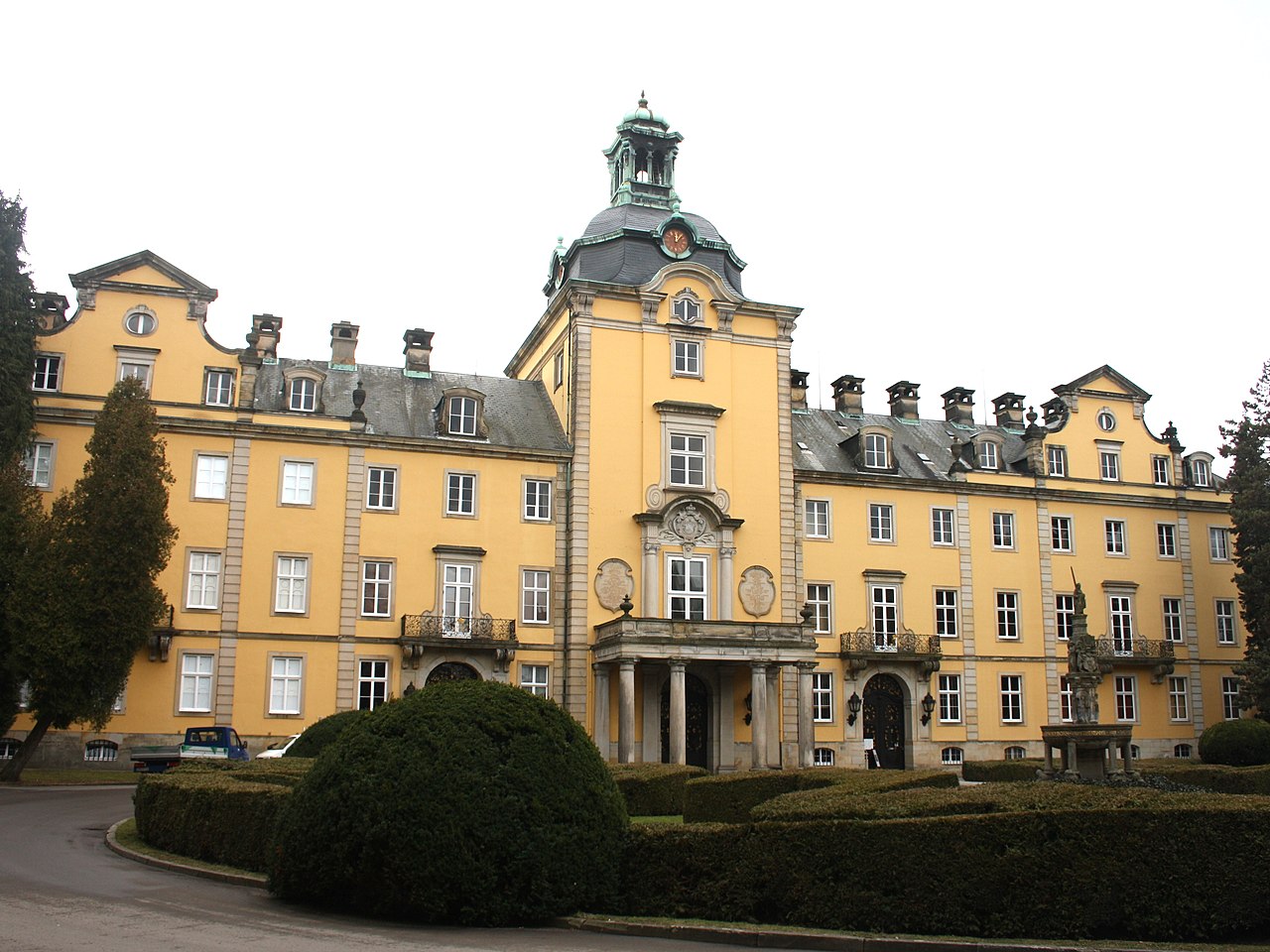
Bückeburg Castle; Credit – Von Beckstet – Eigenes Werk, CC BY-SA 3.0, https://commons.wikimedia.org/w/index.php?curid=9684542
Ida’s husband Georg Wilhelm, Prince of Schaumburg-Lippe, aged 75, died on November 21, 1860, at Bückeburg Castle (link in German) in Bückeburg, Principality of Schaumburg-Lippe, now in the German state of Lower Saxony. He was buried in the Princely Mausoleum (link in German) at the Evangelical Lutheran St. Martini Church (link in German) in Stadthagen, Principality of Schaumburg-Lippe, now in the German state of Lower Saxony

Ida in the last years of her life; Credit – Wikipedia
After Georg Wilhelm’s death, Ida moved to the Old Princely Palace in Bückeburg. Beginning in the winter of 1868, she permanently stayed in Menton, Alpes-Maritimes, France, on the French Riviera. Ida survived her husband by nine years, dying on April 12, 1869, in Menton, Alpes-Maritimes, France at the age of 72. She was buried with her husband in the Princely Mausoleum at St. Martini Church.

St. Martini Church where Ida and her husband are buried; Credit – Von Beckstet – Eigenes Werk, CC BY-SA 3.0, https://commons.wikimedia.org/w/index.php?curid=9678243
This article is the intellectual property of Unofficial Royalty and is NOT TO BE COPIED, EDITED, OR POSTED IN ANY FORM ON ANOTHER WEBSITE under any circumstances. It is permissible to use a link that directs to Unofficial Royalty.
Works Cited
- Flantzer, S. (2020) Georg I, Prince of Waldeck and Pyrmont, Unofficial Royalty. Available at: https://www.unofficialroyalty.com/georg-i-prince-of-waldeck-and-pyrmont/ (Accessed: 25 August 2023).
- Flantzer, Susan. (2020) Georg Wilhelm, Prince of Schaumburg-Lippe, Unofficial Royalty. Available at: https://www.unofficialroyalty.com/georg-wilhelm-prince-of-schaumburg-lippe/ (Accessed: 25 August 2023).
- Ida zu Waldeck und Pyrmont (2023) Wikipedia (German). Available at: https://de.wikipedia.org/wiki/Ida_zu_Waldeck_und_Pyrmont (Accessed: 25 August 2023).
- Princess Ida of Waldeck and Pyrmont (2023) Wikipedia. Available at: https://en.wikipedia.org/wiki/Princess_Ida_of_Waldeck_and_Pyrmont (Accessed: 25 August 2023).



